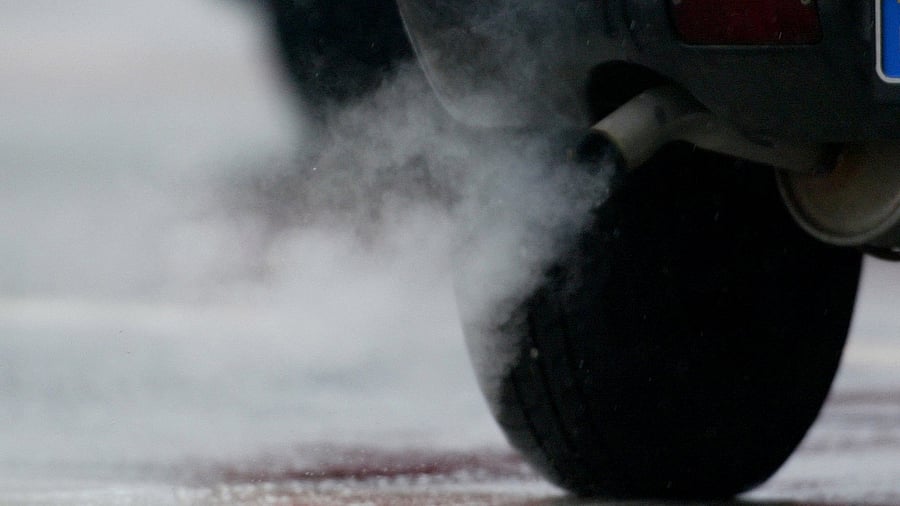
Bengaluru's annual average nitrogen dioxide (NO2) concentration in 2023 was nearly double the World Health Organisation's (WHO) prescribed standards.
Credit: Reuters photo
Bengaluru: Bengaluru's annual average nitrogen dioxide (NO2) concentration in 2023 was nearly double the World Health Organisation's (WHO) prescribed standards, with the City Railway Station (Majestic) emerging as the most polluted area, a new Greenpeace India report reveals.
The report, titled 'Beyond North', examined NO2 concentrations in seven densely populated Indian cities — Jaipur, Pune, Mumbai, Kolkata, Hyderabad, Bengaluru, and Chennai — that have not received the attention they deserve regarding air quality.
NO2 is a toxic gas linked to various respiratory health risks.
The findings, based on data from the Continuous Ambient Air Quality Monitoring (CAAQM) network, show that Chennai's NO2 levels surpassed WHO’s safe threshold of 10 micrograms per cubic meter for 314 days in 2023, or 86% of the year. Pune and Hyderabad followed closely with 312 and 307 days, respectively.
Bengaluru recorded elevated NO2 levels for 295 days, while other cities like Jaipur (277 days), Mumbai (256 days), and Kolkata (133 days) also reported concerning air quality levels.
In Bengaluru, the City Railway Station was the worst-hit, exceeding the WHO standards for 295 days in 2023. Other highly polluted areas included Hombegowda Nagar (125 days), Bapuji Nagar (120 days), and Peenya (119 days). In contrast, Kasturi Nagar recorded no days with high NO2 concentrations.
Out of the 13 monitoring stations in the city, eight recorded annual average NO2 levels above 20 micrograms per cubic meter. The Shivapura station recorded the lowest level at 15 micrograms per cubic meter, while the remaining four stations reported levels between 10 and 13 micrograms per cubic meter.
Transportation sector
Selomi Garniak, Climate Justice Campaigner at Greenpeace India, attributed the high NO2 levels to the transportation sector, especially the rise in private vehicles.
"As cities grow, the increase in private vehicle use worsens air quality and jeopardises public health," she said. "To tackle this, we need a fundamental shift towards a sustainable and efficient public transportation system. Investing in cleaner, more accessible transport options is not just an environmental necessity; it’s an urgent public health imperative. The government must prioritise cleaner mobility solutions to ensure a healthier future."